Transcription of A Short Guide to Lamp & Ballast Disposal
1 A Short Guide to lamp & Ballast Disposal Michael P. Lynch, LC; GE Specification Engineer The most efficacious lamps in use today are fluorescent and high intensity discharge (HID) lamps that contain small amounts of mercury (measured in milligrams). necessary for efficient light generation. Because of the mercury content, the United States Environmental Protection Agency (EPA) and individual States regulate the Disposal of mercury-containing lamps. States may have more stringent regulations than the US EPA. The Disposal of lamps as solid waste is regulated under the Resource Conservation &. Recovery Act (RCRA). Under RCRA, lamps are tested using the Toxic Characteristic Leaching Procedure (TCLP) to determine whether the lamp waste is: Subtitle C: Hazardous Waste (40 CFR Parts 261, 262)1 , or Subtitle D: Municipal & Other Non-hazardous Waste (40 CFR 258).
2 Since the 1990 date of lamp regulation under RCRA, GE and other lamp manufacturers have greatly reduced mercury content in lamps. GE developed Ecolux lamps that have over 85% less mercury content than the older lamp designs. All GE Ecolux lamps pass TCLP, most have a green etch monogram, and all have the suffix ECO' added to the Catalog Product Description. The end user may use manufacturer's data for RCRA hazardous waste determination. GE TCLP Test Results can be obtained at this link: GE TCLP Test Results The most common GE fluorescent lamps used in commercial buildings today are Ecolux lamps: All 2', 3', 4' T8 lamps including Watt-Miser, High Lumen, UltraMax, CovRguard, XL, SXL. T5 High Efficiency, High Output, and Watt-Miser (excludes T5 appliance lamps). All 2', 3', 4' T12 fluorescent lamps Plug-In CFL Double, Triple, and Quad Biax (excludes High Lumen Biax).
3 A complete list is available at this link: GE Ecolux Lamps The user still needs to manage the Disposal of the remaining lamps that are not Ecolux lamps, or lamps that do not pass the TCLP Test. Furthermore, the following states ban the Disposal of any mercury-containing lamps regardless of TCLP status in any solid waste landfill: California Connecticut Maine Massachusetts (effective May 1, 2008). Minnesota New Hampshire New York Rhode Island Vermont Users in the above list of states must recycle lamps under the Universal Waste Rule (40 CFR Part 273) and applicable state regulations that will be discussed below. Under RCRA, one can choose to manage small amounts of non-TCLP-compliant lamp waste as a Conditionally Exempt Small Quantity Generator (CESQG) (40 CFR ). A CESQG generates no more than 220 lbs. (100 kg) of total hazardous waste per calendar month.
4 This includes all hazardous waste, not just lamps. The following amount of lamps weigh 220 lbs or 100 kg: 360 4' T12 lamps 540 4' T8 lamps 910 4' T5 lamps In addition to the States listed above, the following States restrict the CESQG as follows: Colorado, Delaware, Illinois, North Carolina, Ohio, and Pennsylvania will not accept hazardous waste from non-residential facilities. Arkansas, Virginia, and Wisconsin require permitted transportation. Florida, Kansas, Maryland, Missouri, New York, and Tennessee have different limits of hazardous lamp waste. Louisiana does not permit any Disposal under CESQG. Florida and IL do not permit Disposal in municipal waste incinerators. Most waste in southern Florida is incinerated. RCRA Subtitle C regulations are very strict because they apply to all hazardous wastes. Therefore, lamps were added to a subset of RCRA Subtitle C hazardous waste known as Universal Waste on July 6, 1999.
5 Universal Wastes include batteries, pesticides, mercury-containing equipment, and lamps. The goal is to encourage recycling of universal wastes under the Universal Waste Rule (UWR) by simplifying the requirements for collection, storage, transport, and processing. A comparison of the requirements may be found at this link to the EPA web site: Comparison to Other Requirements | Universal Wastes | US EPA. A flow chart of lamp Disposal regulations is shown in Figure 1. Managing lamp wastes under UWR is well documented at and at the EPA web site Managing Lamps - Businessses | Universal Waste | US EPA. GE Ecolux lamps are not a Universal Waste because they pass the TCLP test;. however, recycling of lamps is encouraged even when law does not require it. Once GE Ecolux lamps are mixed with or stored with non-TCLP-compliant lamps, all lamps in the container become Universal Waste.
6 This may be important for some facilities that manage multiple waste streams as it affects the Universal Waste Handler Status. Figure 1: lamp Disposal Regulations Conditionally Exempt Small Quantity Fluorescent User Generator of Exempt Hazardous Waste Standard Municipal Waste Landfill**. Disposes <100kg haz. waste/month*. (360) T12 4' lamps weigh 100 kg Disposes > 100kg haz. waste/month* Small or Large >(360 T12 4' lamps weigh >100 kg) Quantity Generator >(540 T8 4' lamps weigh >100 kg) of Hazardous Waste TCLP Compliant Traditional lamp Do Not Consistently Pass TCLP Test. Lamps Designs Lamps failing TCLP test regulated as Hazardous Waste. Passes TCLP Dispose In Hazardous Recycle & Manage per EPA. Non-Hazardous Classification Waste Landfill Universal Waste Normal Landfill Disposal **. Rule * Per Federal Regulations, State Regulations May Vary ** Per Federal Regulations, State Regulations May Prohibit Disposal as Solid Waste A Universal Waste Handler (Handler) is anyone who produces, stores, collects or accumulates universal waste, but does not treat, recycle, or dispose of the waste.
7 Handlers fall into two categories: Small Quantity Handler of Universal Waste (SQHUW) is a generator (such as a building owner) or third party (contractor, distributor) who accumulates less than 5000 kg of universal waste at a time. No EPA ID is required. May store waste up to one year. Employees who handle the waste are required to have minimal training on proper handling and emergency procedures. Proper marking and labeling of universal waste is required. (40 CFR 273 Subpart B). Large Quantity Handler of Universal Waste (LQHUW) accumulates more than 5000 kg of universal waste. An EPA ID is required. Storage time is still one year. Employees who handle waste are required to have thorough training (40 CFR 273 Subpart C). In terms of 4' linear fluorescent lamps, 5000 kg is equivalent to: 18,000 4' T12 lamps 27,000 4' T8 lamps 45,500 4' T5 lamps The facility or building owner is ultimately responsible to manage all wastes correctly.
8 It is helpful to know the lamps used in the facility, and the TCLP status of those lamps. Furthermore, one must know the rules and regulations of the state where the lamps waste is generated. See attached link for more information: State-by-State Stringency Comparison Table Mark the containers of lamps for accumulation with Universal Waste Lamps and Accumulation Start Date:_____ You may use the original lamp containers, and you may obtain containers from your recycler or from your lamp distributor as many distributors offer recycling as a service. These are referred to as box programs . Maintain thorough records for three years of each shipment of spent lamps sent to recyclers, and obtain a Certificate of Recycling . Include name and address of the Handler and the destination facility. Maintain documents of employee training.
9 Due diligence is required when choosing a lamp recycling firm EPA Select a Recycler. Remember, the generator of the waste holds or shares legal responsibility for proper Disposal of waste. The same applies to contractors who may maintain the lighting in a facility. If the contractor handles the recycling of lamps, make sure you receive documentation from the contractor that the lamps have been recycled. Learn the procedures for properly handling broken lamps. Do not vacuum as a first response as that will further disperse the mercury throughout the area. What to Do if a Fluorescent Light Bulb Breaks. Ballasts: Disposal of ballasts is not nearly as regulated as lamp Disposal . Very old ballasts manufactured before 1979 contain capacitors with Polychlorinated Biphenyls (PCB's). The EPA regulates PCB's under the Toxic Substances and Control Act (TSCA).
10 All ballasts manufactured after January 1, 1979 do not contain PCB's and the label on the Ballast is marked No PCB . A list of firms qualified to dispose of such ballasts may be found at . Electronic ballasts used today may contain lead solders. Reduction of Hazardous Substances (RoHS) is a European Directive that restricts six substances (lead, mercury, cadmium, hexavalent chromium, PBB, and PBDE) in electronic products shipped into Europe since July 2006. The National Electrical Manufacturers Association (NEMA) has a call to action for US Suppliers to have RoHS compliance by 2010. As part of GE's Ecomagination program, GE's electronic ballasts are already RoHS. compliant as of 2007. GE's electronic ballasts are the only RoHS-compliant Ballast in North America. Only GE offers a TCLP and RoHS-compliant lighting system.
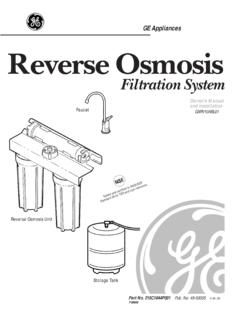




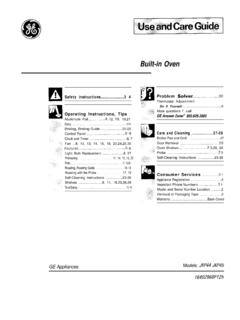

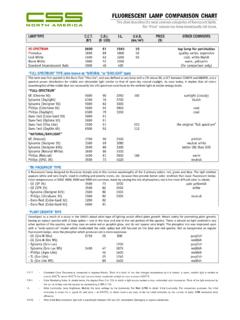
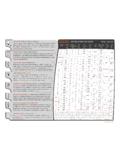

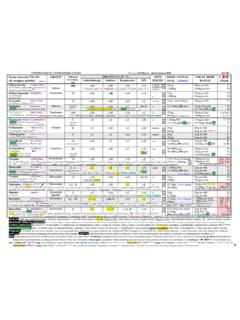

![WELCOME [www.maxlite.com]](/cache/preview/4/e/1/b/d/f/0/1/thumb-4e1bdf01942499ed99a302b529376e1f.jpg)